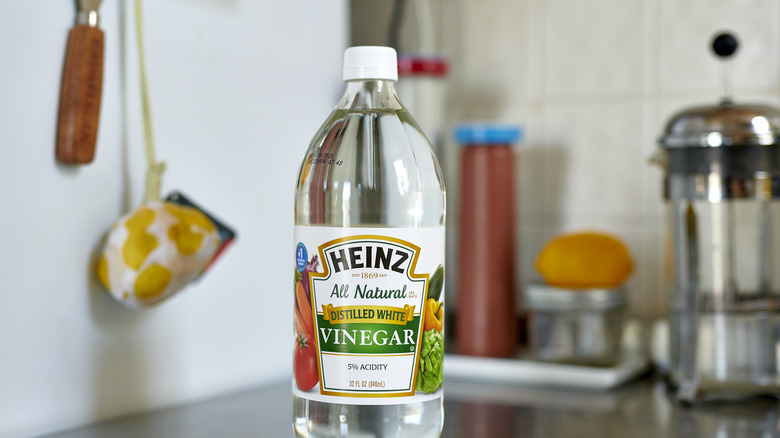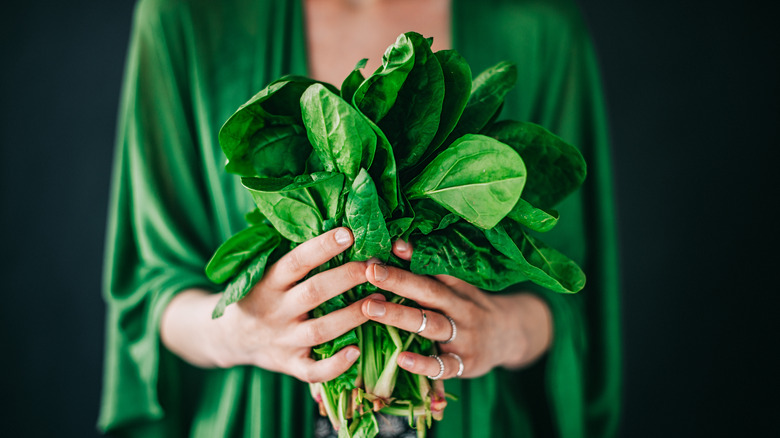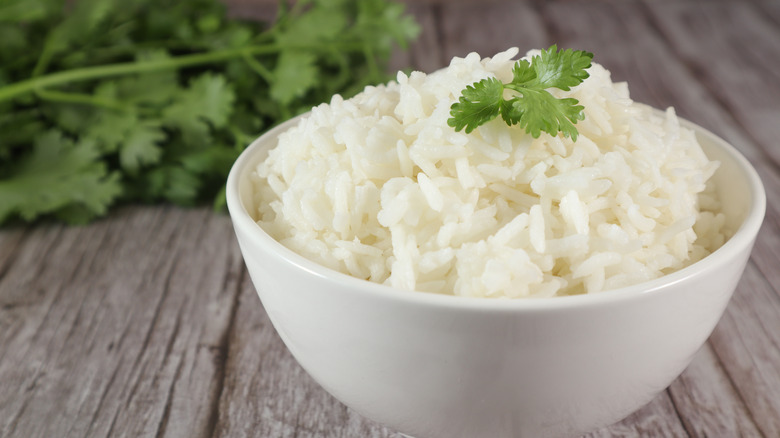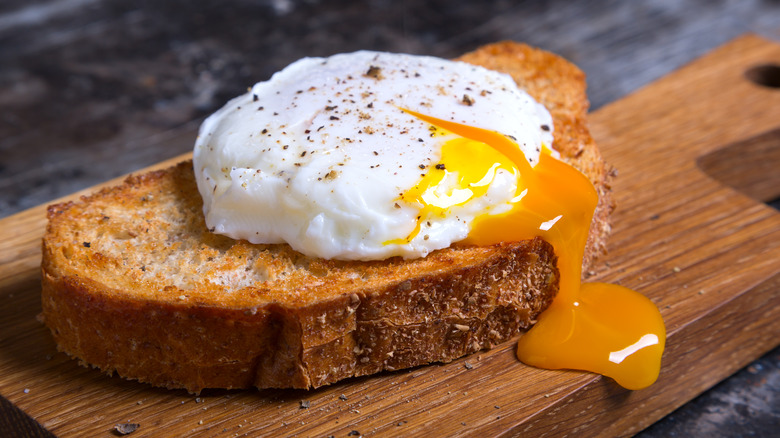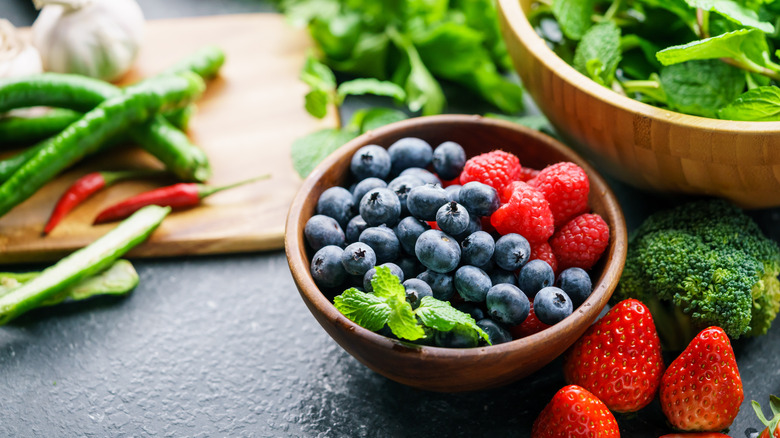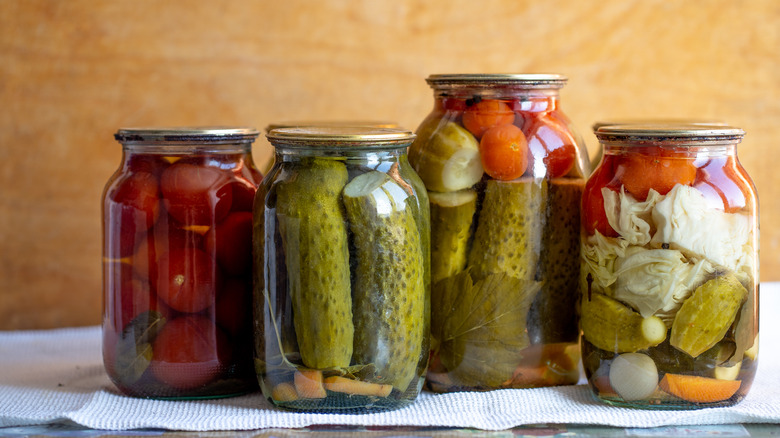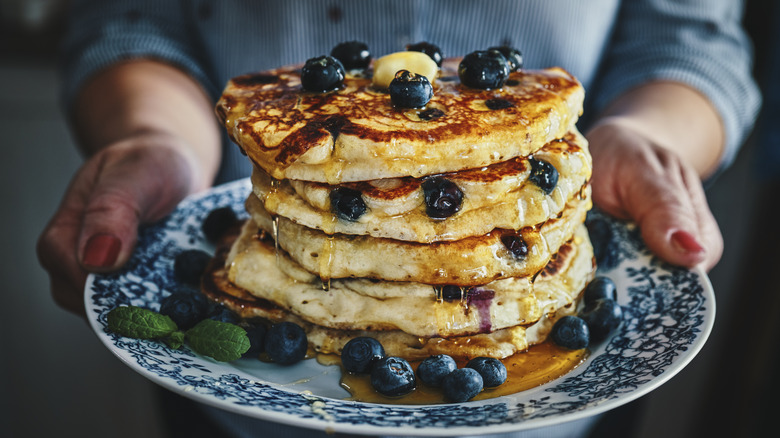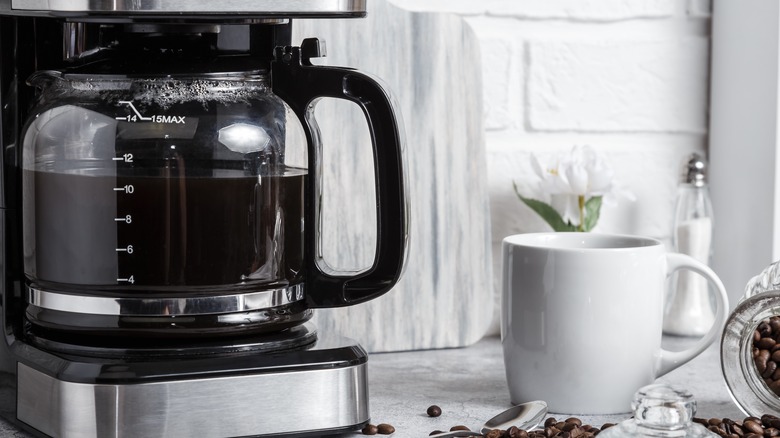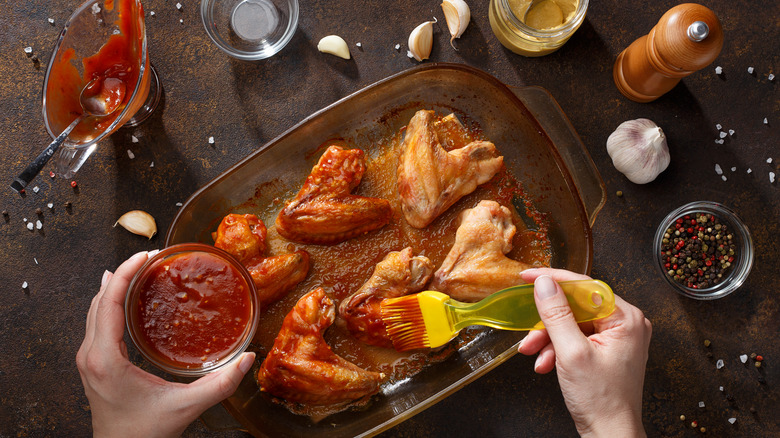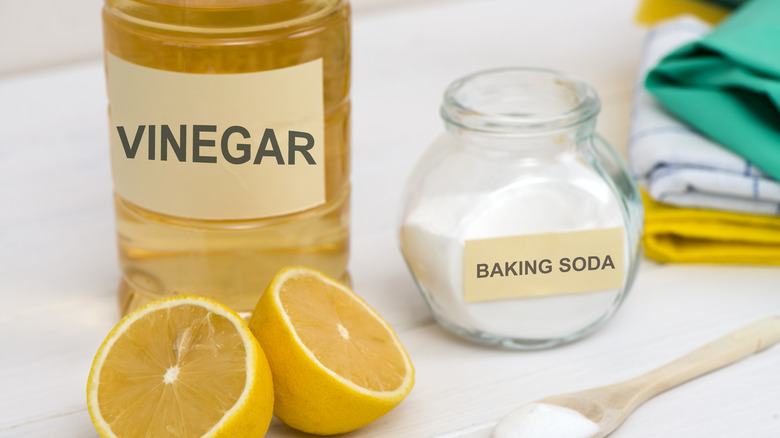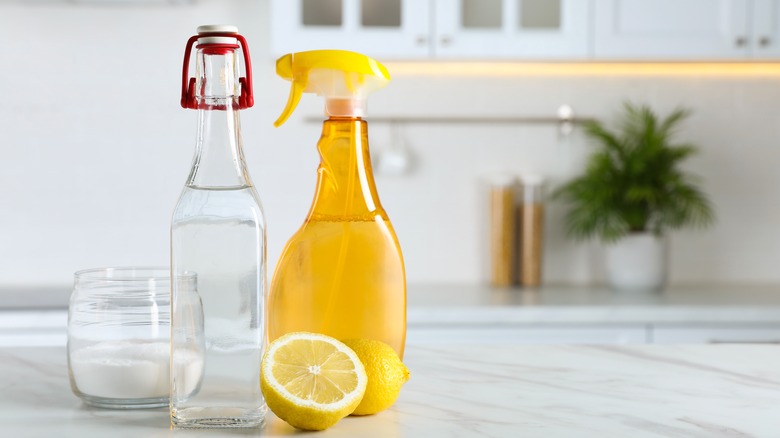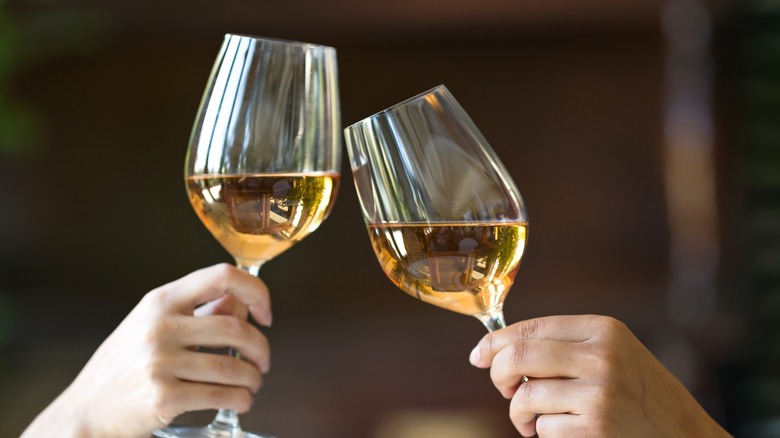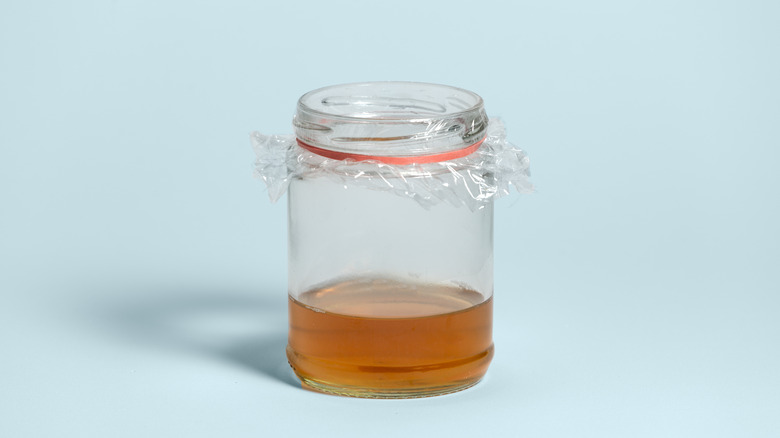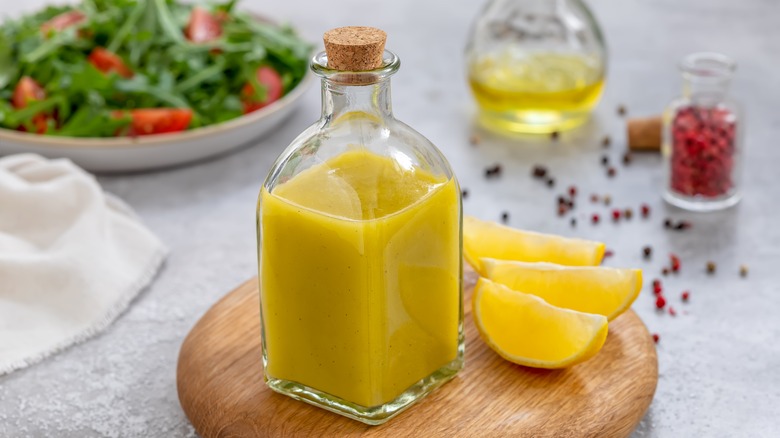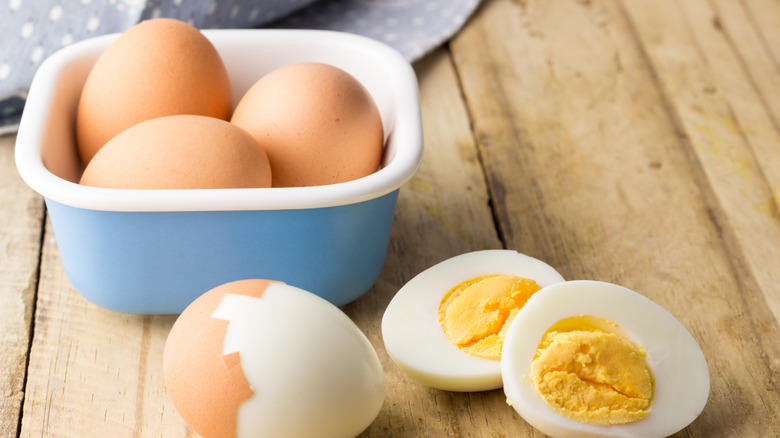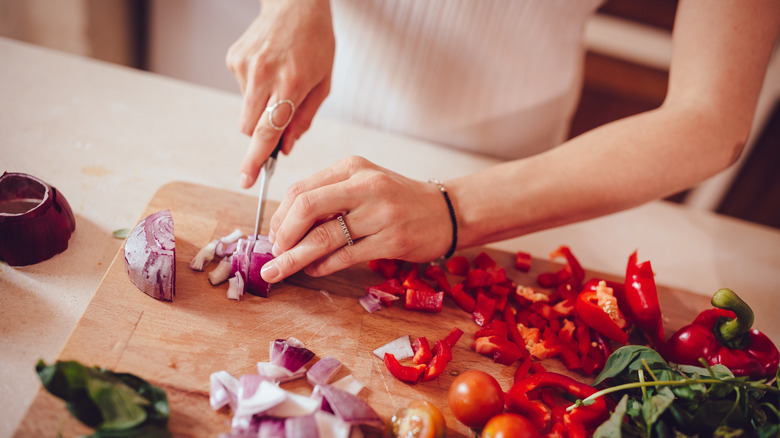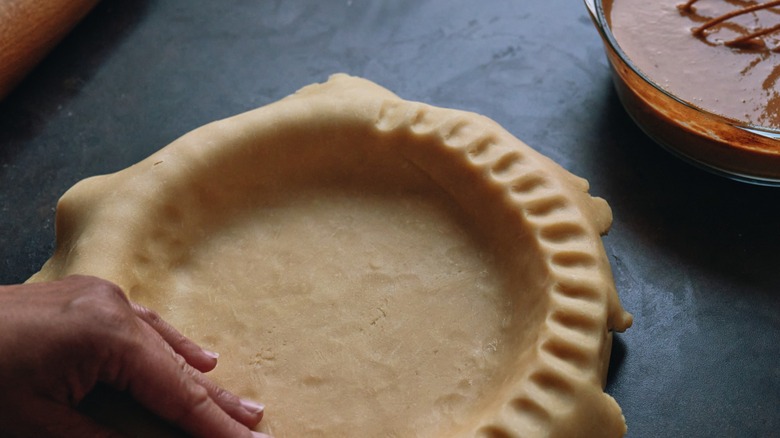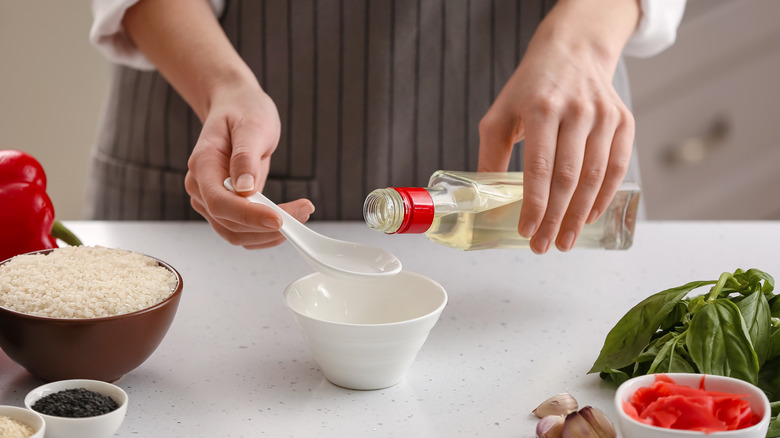19 Vinegar Hacks You'll Wish You Knew Sooner
Vinegar: It's an unassuming kitchen staple tucked away in the back of your pantry or hidden underneath your kitchen sink. We often reach for it when we're pickling veggies or dressing salads, but it's time to recognize vinegar as the unsung hero of our kitchens. Its uses go well beyond pickling and salads — it can not only elevate your culinary game but make your daily life a whole lot easier, too. Not only does vinegar help to take your dishes to a whole new level, but it's also the best cleaner to have on hand for all kinds of sticky situations. If there's a mess in your kitchen, vinegar is the one-stop solution.
Get ready to dive into the world of vinegar hacks that will undoubtedly revolutionize the way you cook, eat, and clean. From enhancing the taste and texture of your dishes and keeping pests at bay to extending the shelf life of your groceries and giving your appliances a shiny new look, vinegar is here to rescue you from kitchen conundrums you didn't even know you had. Keep reading to discover the many incredible, and often surprising, uses of vinegar.
1. Revive soggy greens
When you bring your fresh produce home with you from the store, do you shove it in your crisper drawer without a second thought? Unfortunately, this practice can lead to your greens wilting and rotting much faster than you'd like, and there's nothing worse than soggy greens when you're craving a delicious salad.
But with a little bit of white vinegar, you can bring those dead veggies back to life (at least long enough to cook them). To revive wilted or soggy greens, first, trim away any shriveled parts. Then, soak them in ice water with a splash of white vinegar for up to 10 minutes and watch them crisp up right before your eyes! Gently pat the greens dry with a paper towel and enjoy!
2. Fluff up your rice
Want to take your rice cooking skills to the next level? There's nothing like a bowl of perfectly fluffy rice, and vinegar can help you get there. All you have to do is add about a tablespoon of white vinegar per cup to the cooking water before adding rice.
So why does this trick work so well? The acid in the vinegar helps to rinse off the extra starch on the exterior of the rice. That starch is what causes the individual rice kernels to stick together. So by adding vinegar to your cooking water, you can get rid of that starch and allow the rice grains to separate. The result is a light and fluffy pile of rice that doesn't feel too dense, sticky, or heavy. For even better results, make sure to rinse your rice in warm water two to three times to rinse off additional starch from the rice.
3. Perfect poached eggs
Ever tried to make poached eggs only to end up with a foamy, feathery mess in your pan? Or, even worse, have your egg yolks always break while trying to cook them? Poaching eggs requires the right technique, and just a little bit of vinegar. Add about a tablespoon of white vinegar to your cooking water while it's heating up — it will help the egg whites coagulate, giving you firmer egg whites which are more difficult to break.
Even better, when you use the same water-to-vinegar ratio each time you poach your eggs, you can ensure consistent results. The vinegar keeps the egg whites from feathering out in the water, so you get neat and tidy eggs that you can easily lift from the water with a slotted spoon.
4. Fruit & veggie wash
Pesticides are commonly used in conventional farming to protect crops from insects and diseases. However, these chemical residues can remain on the surface of fruits and vegetables, even after washing with water alone. For a cheap and effective solution, you can create a natural produce wash to help remove any pesticides and bacteria. Vinegar, particularly white vinegar, is a mild acid with antimicrobial properties, which helps break down and remove pesticide residues more effectively than water alone.
Just mix one part white vinegar with three parts water in a clean container. Submerge your fruits and vegetables in the mixture, swish them around gently, and then rinse them thoroughly with fresh water to remove any vinegar taste. Use this easy DIY produce wash on a wide variety of foods, from fruits and berries to leafy greens, squashes to broccoli and cauliflower, and more.
5. Homemade pickles
Making homemade pickles using vinegar is a straightforward way to preserve and enhance the flavor of vegetables. While cucumbers are easily the most popular food to pickle, you may also want to try your luck with peppers, onions, asparagus, eggs, garlic, mushrooms, and more. When pickling foods, vinegar is the star ingredient, not only because it does wonders to enhance the flavors of foods, but also because it acts as a preservative.
Start by thoroughly washing and slicing your vegetables. In a saucepan, combine your vinegar, salt, and preferred spices, according to your pickling recipe. The ratio of vinegar to water usually ranges from 1:1 to 2:1, depending on your taste preferences and the acidity of the food you're pickling. Heat the mixture until it simmers and the salt is dissolved. Then place the veggies in a clean glass jar, before pouring the hot pickling brine on top. Seal the jars, let them cool, and store them for later!
6. Stainless steel shine
We love stainless steel cookware because it's durable, modern, and easy to work with. But it's also prone to grease stains, water spots, and discoloration. If you want to restore your stainless steel to its former glory, vinegar is going to be your best friend. The mild acidity in white vinegar helps to dissolve tough cooked-on grease, neutralize lingering odors, and wipe away streaks and spots.
To make a quick and easy vinegar cleaner that's non-toxic and eco-friendly, just combine 3 parts white vinegar and one part water in a spray bottle. Spray the solution on the surface and allow a few minutes for the vinegar to loosen up the dirt and grime. For stubborn stains, try a paste of vinegar and salt, which is a mild abrasive, to help scrub the dirt loose.
7. Fluffy pancakes
There's nothing better than homemade pancakes on a weekend morning, but you may be surprised to hear that vinegar is the key to the fluffiest pancakes ever. To use vinegar for fluffier pancakes, simply add a little white vinegar to your pancake batter. A teaspoon of white vinegar mixed with a cup of milk is a common ratio to use
This trick works when you're using a pancake recipe that uses baking soda in the dry ingredients. The vinegar reacts with the baking soda in the pancake batter and releases carbon dioxide, creating air bubbles that give the pancakes a light and airy texture. What's more, the good news is that adding a little vinegar to your pancake batter doesn't change the taste! When used in moderation, you shouldn't be able to notice any vinegar flavor in the final product.
8. Clean and descale the coffee maker
Over time, mineral deposits from water, oils from coffee grounds, and residue from previous brews can build up inside a coffee machine, affecting both the taste of the coffee and the efficiency of the appliance. Fortunately, cleaning and descaling your coffee maker is a straightforward process, and all you need is white vinegar and water.
Mix a 1:1 solution of white vinegar and water and pour the vinegar and water solution into the water reservoir of your coffee maker. Place an empty coffee filter in the basket or tray where you normally put the coffee grounds. Turn on the coffee maker and run a brew cycle as if you were making coffee. The vinegar solution will flow through the machine, cleaning and descaling as it goes. After the cycle is complete, refill the water reservoir with fresh water and run another brew cycle to rinse out any remaining vinegar residue.
9. Magic meat marinade
Whether you're preparing beef, chicken, pork, or seafood, a great marinade can elevate the taste and texture of the meat, and adding vinegar to your meat marinades can bring them to the next level. One of the primary functions of vinegar in marinades is to tenderize meat. The acid in vinegar, specifically acetic acid, helps break down the muscle fibers in the meat and make them more tender and easier to chew. This process is especially useful for tougher cuts of meat, like flank or brisket.
The beauty of using vinegar in meat marinades is that you can customize the flavor to suit your preferences. Choose from red wine vinegar, balsamic vinegar, white wine vinegar, apple cider vinegar, or rice vinegar — each type of vinegar can add a distinctive flavor profile to your finished dish.
10. Baking soda booster
Combining baking soda with vinegar in recipes is a clever technique to increase the leavening power in batters and doughs, particularly in baked goods like muffins, breads, and cakes. Baking soda is a base, and when combined with an acid like vinegar, it undergoes a chemical reaction that produces carbon dioxide gas. As the gas is produced, it gets trapped in the dough or batter, causing it to expand and rise. This creates bubbles within the mixture, making it lighter and fluffier. This effect is often referred to as a "chemical leavening reaction."
In muffins and cakes, this chemical reaction makes your batters and doughs more tender and moist. It also enhances the volume and rise, giving the baked goods a light and fluffy quality. Do keep in mind though, that while much of the vinegar itself typically evaporates during baking, enough can be left behind to add a mild tangy note to the finished product.
11. All-purpose cleaner
To create the ultimate all-purpose cleaning solution for your kitchen, you only need two main ingredients: Water and white vinegar. But why vinegar? Vinegar is well-known for its effectiveness as a cleaning agent, and has natural antibacterial and antifungal properties. As a disinfectant, vinegar isn't as effective as stronger cleaning agents, although it can certainly help to kill off bacteria like E. coli and salmonella that can otherwise cause food poisoning. Where vinegar really shines though, is in removing dirt, stains, and odors from various surfaces in your home. You can use it on countertops, sinks, bathroom fixtures, and more.
One of the key advantages of this cleaning solution is that it's non-toxic and environmentally friendly. Unlike some commercial cleaning products that contain harsh chemicals and can harm the environment, this mixture relies on simple ingredients that break down dirt and grime without producing fumes — though as an acid, it can still damage some surfaces, so it's always best to test it somewhere inconspicuous first, to be safe. If you're looking for a sustainable and green cleaning option without the higher price tag, this is the method for you.
12. Lustrous glassware
Using a mixture of vinegar and warm water to shine glassware is a simple and effective technique that can help remove mineral deposits and stains, leaving them sparkling and spot-free. In a large container, combine equal parts white vinegar and warm water. Place the glassware you want to clean and shine into the vinegar and water solution. Make sure everything is fully submerged.
Allow the glassware to soak in the mixture for at least 15 minutes. The warm water and vinegar work together to loosen and dissolve mineral deposits, such as calcium and lime, that can build up on glass surfaces. For stubborn spots or mineral buildup, you can gently scrub the affected areas with a soft cloth, sponge, or a soft brush, being careful not to scratch the glass. After soaking and (if necessary) scrubbing, rinse the glassware thoroughly with clean water. Make sure all traces of vinegar and loosened deposits are washed away.
13. Natural pest repellent
Ants and other insects are often attracted to food residues and scents in your kitchen. To deter them, thoroughly wipe down countertops, surfaces, and areas where you've noticed ant trails or other pest activity with a vinegar and water solution. The smell of vinegar disrupts the pheromone trails that ants use to communicate, making it harder for them to find food sources in your home. This method is eco-friendly and safe for use in areas where you prepare and store food.
Vinegar can also be a particularly effective gnat trap. Apple cider vinegar has a sweet, fruity scent that attracts fruit flies. Add a couple of drops of dish soap to a cup of apple cider vinegar to reduce the surface tension of the liquid, causing the gnats to get trapped when they land on the surface. Cover the cup or bottle with plastic wrap, and poke a few small holes in it. The gnats will be drawn to the vinegar, enter through the holes, and become trapped inside.
14. Homemade salad dressing
Creating your own salad dressings, like a simple vinaigrette, allows you to tailor flavors to your preferences and dietary needs. Plus, it can be a fun and rewarding culinary experiment as you discover new combinations of ingredients that enhance your salads. Say goodbye to store-bought options and embrace the versatility of homemade dressings!
Vinegar is a common base for dressings because the acid in the vinegar gives a tangy and bright flavor that compliments salads well. Combine the vinegar with an oil, like olive oil, to add a bit of richness and balance out the tanginess of the vinegar. To give your dressing a full flavor, include herbs like basil, oregano, thyme, or cilantro. Spices like garlic, onion powder, black pepper, or red pepper flakes can also add depth and complexity.
15. Eggshell peeling trick
The science behind this trick is simple: Eggshells are primarily composed of calcium carbonate. When calcium carbonate comes into contact with the acetic acid in vinegar, it reacts to form calcium acetate, releasing carbon dioxide, and water. This calcium acetate is more soluble in water than calcium carbonate, so the eggshell becomes weaker, loosening it up from the egg white. It also becomes more flexible, making it easier to peel after cooking.
The vinegar treatment helps prevent the egg white from sticking to the inner membrane of the eggshell, making the peeling process smoother and giving the peeled eggs a tidier appearance. Just keep in mind that you don't need to use a lot of vinegar. A splash or a teaspoon of vinegar per quart of water should be sufficient to create the mildly acidic environment needed for this effect. Using too much can result in an overly strong vinegar flavor in the eggs.
16. Fresher cut flowers
Nothing brightens up your home like a bouquet of fresh-cut flowers, but flowers can fade and droop all too quickly. Fortunately, there's a quick, easy, and cheap solution: Extend the life of cut flowers by adding a combination of sugar and white vinegar to your vase water. This will keep bacterial growth from spreading and help your flowers live longer.
White vinegar has natural antibacterial properties, which help stall bacterial growth in the vase water which can otherwise cause flowers to decay more quickly. By adding vinegar, you create a less hospitable environment for these harmful microbes, helping your flowers to last longer. This also makes it safe to add a little sugar to the vase water, to serve as a source of nutrition for the cut flowers. This nourishment helps keep the flowers looking fresh and vibrant for a longer period, while the vinegar keeps any bacteria from eating it all up instead.
17. No more onion tears
Onions contain sulfur compounds that, when cut, can react with enzymes to produce a sulfurous gas. Technically called a lachrymator, this gas can irritate your nose and eyes and make you tear up. The acetic acid in vinegar can help to prevent this from happening; as an acid, vinegar can denature the onion enzymes to stop them from producing any of that irritant gas.
There are a couple of ways you can use vinegar to prevent tears when cutting onions. First, you can try spraying a small amount of vinegar on your cutting board before you start chopping the onion. You can also go a step further, keep a small bowl of vinegar nearby, and wipe your knife with it using a cloth or paper towel, keeping those sulfur compounds at bay even more effectively. Any time you feel as though the onion fumes are coming back, just wipe down your knife again. Finally, rinse off the knife and cutting board with the onion immediately once you finish cutting the onion.
18. The flakiest pie crust ever
Adding apple cider vinegar to your dough will give you a flakier and more tender pie crust. It works because the acidity in the apple cider vinegar can help inhibit the formation of gluten in the dough. Gluten is a protein in wheat flour that forms when you mix flour with water. This gluten is what gives the pie crust dough its elasticity and structure.
While some recipes call for the development of gluten (bread dough needs this for its signature texture), in pie crusts, you generally want to minimize gluten formation because too much can make the crust tough and less flaky. The dough with less gluten is easier to work with and is less likely to become overworked or shrink when you roll it out, making it simpler to achieve the desired size for your pie dish.
19. Create instant sauces
No dinner is complete without a delicious sauce to drizzle over your meat or vegetables. But who has time to follow a recipe or buy extra ingredients for a sauce? That's where a pan sauce comes in — it uses the juices and oils left in your pan from cooking and transforms it into a delicious complement to any kind of dish.
If you want a surefire way to create the quickest and easiest pan sauce you've ever made, then reach for the vinegar bottle. No matter what kind of meat or fish you use, once you've finished cooking your protein, deglaze your pan with a splash of vinegar. White wine vinegar can be a good option for this. Then, add stock, spices, and butter to the mixture and melt everything together. You'll have a delicious sauce that perfectly complements your meal, and it won't take much time or effort.
